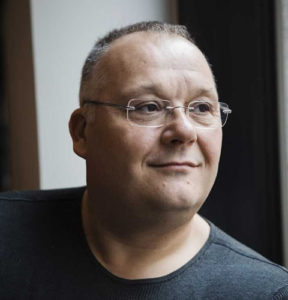
By: Rachael Andrews
Dr. Cas Mudde, Stanley Wade Shelton UGAF Professor of International Affairs at the School of Public and International Affairs, has studied far right politics for over 20 years. So, what does it look like when politics move from the margins to the mainstream? Mudde says it happens gradually, and to the untrained eye, the changes may not be easily noticed.
Mudde’s eyes, though, are trained.
“When you study it for so long there are certain terminologies and issues that, for me, are directly associated with the far right,” Mudde explains, “and so when I start to see them in the mainstream, even if it is just an occasional mentioning, it’s a red flag.”
The rise of the contemporary far right can be traced to two key events. The first was 9/11.
“Globally and in the West, [there was a] shift [in the] debate to socio-cultural issues rather than socio-economic issues. This created an opportunity for the far right to adapt their nativist policies and redefine the ‘Other’ as the Muslim,” Mudde asserts. “[Then there was a] critique based on liberal values— that they would be a threat to gender equality, separation of church and state, and also on security issues by linking them to terrorism.”
Importantly, these arguments were not only espoused by the far right, but also, by the mainstream right and left in the wake of 9/11.
The second key event was the refugee crisis of 2015. “This occurred at the same time as a spike in jihadi terrorism particularly in Paris and Brussels,” Mudde says. Amidst this crisis, there were arguments that refugees threatened national identity and national security—these are far right frames. However, after 2015, policies were enacted that reflected these far right arguments.
So, what does the far right have to do with President Donald Trump? “The far right predates Trump by decades, and people like Marine le Pen from France are very different from Trump,” Mudde says. “For instance, Marine le Pen was raised on far right ideology, her dad was the leader of the party, but other leaders of far right parties have been in [those] parties at least since their teens so they have been socialized in an ideology.”
It is important to consider that while Trump’s campaign and base had plenty of far right characteristics, the Trump vote is not necessarily far right.
“The Trump vote is first and foremost a Republican vote, and that’s why I have a problem with seeing Trump as an example of the far right – he himself is a far right actor but he was elected as the representative of a mainstream party,” Mudde says. “Marine le Pen [on the other hand] is a representative of a far right party – you only vote for her if you believe in the party’s agenda.”
There is an important difference between the voter who voted for President Trump because of affinity for Trump, and the voter who voted for President Trump because he was the nominee of the Republican party in the general election of 2016.
According to Mudde, the key to understanding and responding to the far right is, first, to properly identify it. However, Mudde notes this is increasingly difficult because far right politics have become mainstream politics.
“When they were in the margins, it was pretty clear. Even today, it is not difficult to spot a neo-Nazi because they stand out so much. The radical right doesn’t stand out so much anymore,” Mudde mentions. “The difference between mainstream right wing politicians on immigration and radical right politicians on immigration is very small.”
“On top of that, we have a broad consensus in many countries on the alleged problems of Islam, problems with immigration that we find normal, which actually comes from a radical right frame,” Mudde says.
However, as important as it is to understand what the far right looks like, it is also important to understand liberal democracy so that it can be defended more effectively against attacks. For example, instead of responding to the far right, those who value liberal democracy should have their own agenda.
“The more we talk about their issues (immigration, corruption, crime), the more relevant they [members of the far right] are,” Mudde concludes. “If we talk about things like education, environment, healthcare, they have very little to say, [and thereby] become less relevant because they have no vision on these things.”
Dr. Mudde’s new book, The Far Right Today, was released in the United States on November 11.








